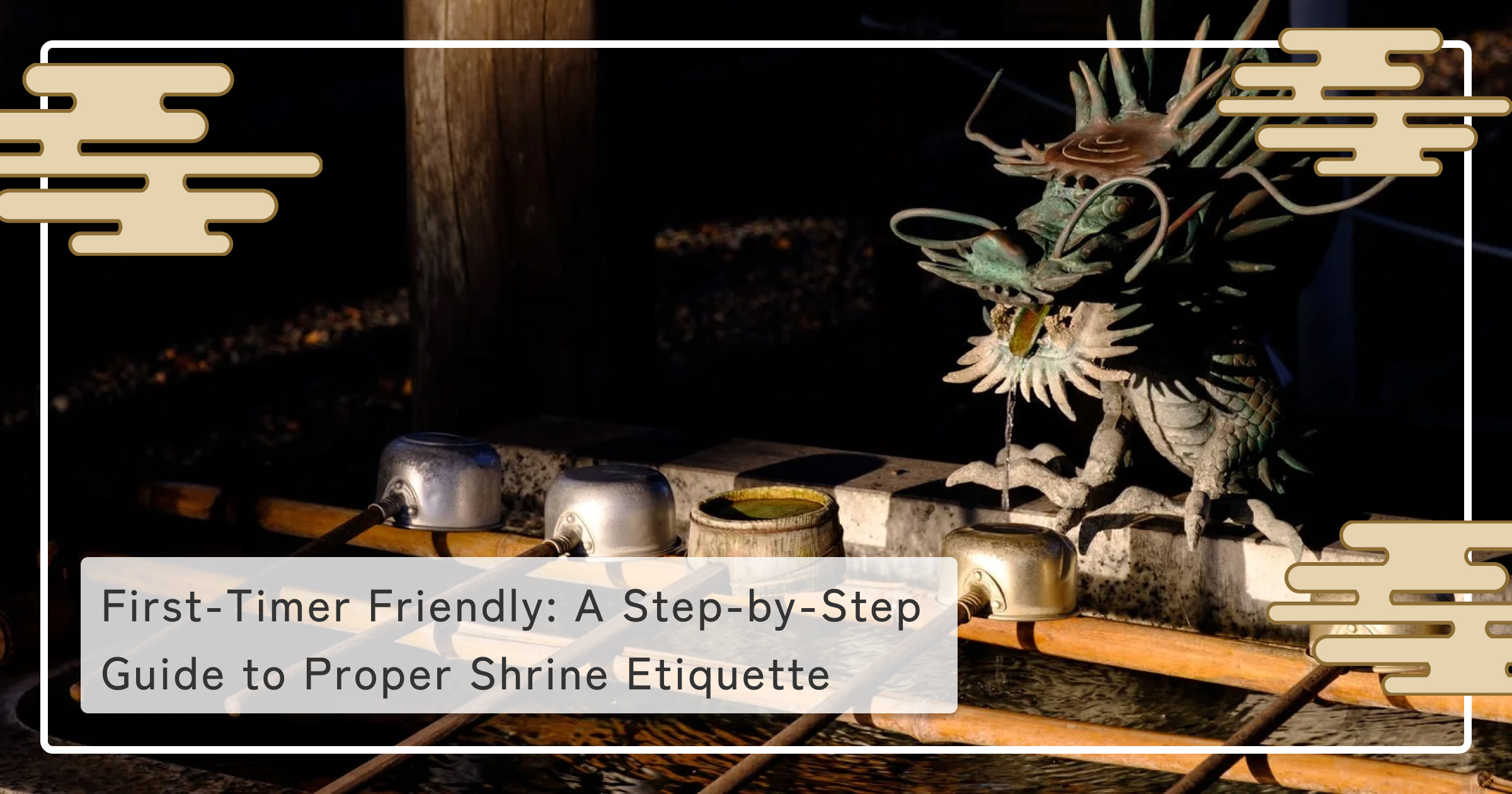
First-Timer Friendly: A Step-by-Step Guide to Proper Shrine Etiquette
Shrines across Japan have long been cherished as sacred spaces where people offer prayers and purify their minds.
However, many visitors often wonder, "How exactly do I worship at a shrine?"
In this article, we introduce the basic manners and step-by-step process of shrine worship in Japan.
Bow Before Passing Through the Torii Gate
At the entrance of a shrine stands a "torii," a traditional gate marking the boundary between the secular world and the sacred area. It's proper etiquette to bow lightly before walking through.
*The center of the torii, known as "seichū," is believed to be the path of the gods. It is best to walk slightly off to the side.
2. Purify Yourself at the Temizuya
Along the approach to the shrine, you'll find a purification basin called "temizuya." Use it to cleanse your hands and mouth as a form of spiritual preparation.
Steps:
Hold the ladle with your right hand and pour water over your left hand.
Switch hands and pour water over your right hand.
Switch again, pour water into your left hand, and use it to rinse your mouth (do not drink directly from the ladle).
Rinse your left hand again.
Tip the ladle upright so that water flows down the handle before placing it back.
Worship at the Main Hall ("Two Bows, Two Claps, One Bow")
At the main hall ("haiden"), follow this traditional method of worship:
Worship procedure:
Place a coin in the offering box (you don't need to make a loud sound).
If there's a bell, gently ring it to announce your presence to the deity.
Bow deeply twice.
Clap your hands twice in front of your chest.
Make your silent prayer or wish.
Finish with one final deep bow.
*Some shrines may have unique customs (e.g., Izumo Taisha uses "two bows, four claps, one bow").
Iconic Red Torii: Fushimi Inari Taisha's Senbon Torii
Fushimi Inari Taisha in Kyoto is the head shrine of approximately 30,000 Inari shrines across Japan. Its iconic "Senbon Torii" (Thousand Torii Gates) are painted red, symbolizing the passage of prayers.
Each gate bears the name of a donor, reflecting a blend of faith and cultural tradition of shrine donations.
Get Charms and Goshuin at the Shrine Office
If you'd like to receive an omamori (charm) or a goshuin (seal stamp), visit the "shamusho" or "juyosho" after worship. When requesting a goshuin, it's customary to bring your own goshuin-cho (stamp book).
Bow Again Before Leaving
After finishing your visit, just as when you entered, bow lightly in front of the torii before leaving the sacred grounds.
Conclusion
When worshiping at a shrine, what's most important is not strict formality, but showing sincere gratitude and respect.
Even during sightseeing, understanding these customs will help you experience Japanese culture more deeply.